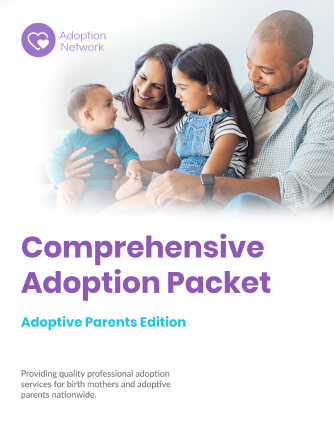
Federal Family and Medical Leave Act
Intended to balance the demands of the workplace with the needs of families, the Federal Family and Medical Leave Act (FMLA) has successfully been in place since 1993. Essentially, the premise behind the FMLA is that it requires covered employers to provide up to 12 weeks of unpaid, job protected leave while maintaining health benefits to eligible employees for a variety of reasons. One reason of which is relevant here, at the Adoption Network, because it is mandated for the placement of a child for adoption or foster care with an employee. Here are a few things you should know!
What is it?
According to an article for U.S. News and World Report, the FMLA can entitle an eligible employee to take up to 12 weeks of unpaid leave during a 12month period for your own serious health condition, to care of an immediate family member who has a serious health condition, or for what the Department of Labor (DOL) website refers to as “birth and bonding:” an extended parental leave for the birth or adoption of a child for the sake of bonding with a new child.
Is my Child Eligible?

According to the U.S. Department of Labor, the FMLA defines a “son or daughter” as a biological, adopted, or foster child, a stepchild, a legal ward, or a child of a person standing in loco parentis.
In other words, the Family and Medical Leave Act makes it possible for an eligible employee with day-to-day responsibility for a child to potentially be entitled to leave even if the they do not have a biological or legal relationship to the child. Loco parentis actually refers to that exact situation, meaning a relationship in which a person puts himself or herself in the place of a father or mother by assuming and discharging the obligations of a parent to a child.
Am I Eligible?
Working does not necessarily guarantee your protection under the Family and Medical Leave Act. In fact, eligible employees are required to have worked for their covered employer for at least 12 months prior to requesting leave. Additionally, at least 1,250 hours must have been worked over the course of those 12 months, which evens out to about 156 days of working eight hour days.
Is my Workplace Eligible?

Companies are only allowed to grant leave if they have at least 50 employees who work within a 75mile radius of its location. It is important to note, however, that different states have different provisions. Nonetheless, your company will know whether or not it is eligible, or whether or not you, as a worker, are eligible.
What’s the Catch?
Typically, there isn’t one. Although no catch does not necessarily mean no change. Something that you should be aware of with the Federal Family and Medical Leave Act is that a job is guaranteed to you upon your return to the company but that does not mean that your job will be the same.
Ideally, your company will be able to restore things to how they were before but that is not what is required by the DOL. In fact, all that is promised is that “an employee must be restored to the employee’s original job, or to an equivalent job with equivalent pay, benefits, and other terms and conditions of employment.” However, most companies with good integrity will keep their employees with their original position, because training newcomers for the same job is usually more timely and costly than it is to keep a capable employee.
Ultimately, the Federal Family and Medical Leave Act exists to help create balance for every family, adoptive or not. Truly, it is an incredible benefit for any growing relationship, but, in the case of adoption, it becomes a beautiful opportunity for building and bonding. If you’re considering adoption, consider the FMLA as well. Talk to your family, talk to your company, and even talk to us!*
*Please Note that each individual needs to go to their respective HR department to seek the benefits mentioned within this content.
Available 24/7 to Answer Your Adoption Questions


Search Adoption Network
Speak with a Specialist 1-800-367-2367